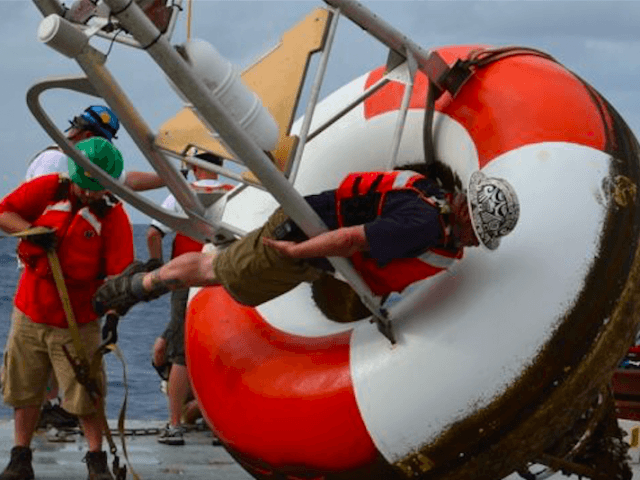After a record-breaking rainless January in San Francisco and much of the Bay Area, an “atmospheric river” will bring a rainstorm to the region this weekend–and one team of scientists will ride into the storm to study the phenomenon and its potential impact on California’s devastating three-year drought.
Beginning Thursday, an atmospheric river–a ribbon of water vapor that extends thousands of miles in the sky–will bring between one to three inches of rain to San Francisco and the Bay Area, according to the Weather Channel.
Heavier rainfall is expected in areas further north in California and southwest Oregon. Flood watches are already in effect in some of these areas. The Sierra Nevada is likely to see significant snowfall.
According to CBS San Francisco’s KPIX5, an 18-man team of scientists will sail directly into the oncoming storm to study its characteristics and its potential impacts on the drought-plagued Golden State.
The team leading the mission is CalWater, an inter-agency effort involving scientists from the National Oceanic and Atmospheric Association, the U.S. Department of Energy, Howard University, and NASA.
CalWater will pilot aircraft through and on top of the storms while some will sail into the storms aboard the Ronald H. Brown. Ground-based measurements will be taken off of the California coast. Researchers will study the storms’ intensity, speed and temperature, among other data, to help them understand the role atmospheric rivers play in precipitation, drought, and water storage.
A 2013 study conducted by the University of California and the U.S. Geological Survey highlights the importance of atmospheric rivers in ending droughts in the West. According to the study, between 33-40% of all long-term droughts on the West Coast have been ended by rainstorms caused by atmospheric rivers.
“Climate and weather models have a hard time getting precipitation right,” CalWater lead investigator Marty Ralph said earlier this month in a statement announcing the research. “In fact, the big precipitation events that are so important for water supply and can cause flooding, mostly due to atmospheric rivers, are some of the most difficult to predict with useful accuracy.”
The flooding caused by atmospheric rivers can be extreme, and can lead to mudslides, debris flows and other dangerous conditions.
Atmospheric rivers “provide us water, but they are also a major source of our calamity,” USGS project manager Dale Cox told the Los Angeles Times. “Everybody’s hoping for them, but we don’t want too many.”

COMMENTS
Please let us know if you're having issues with commenting.